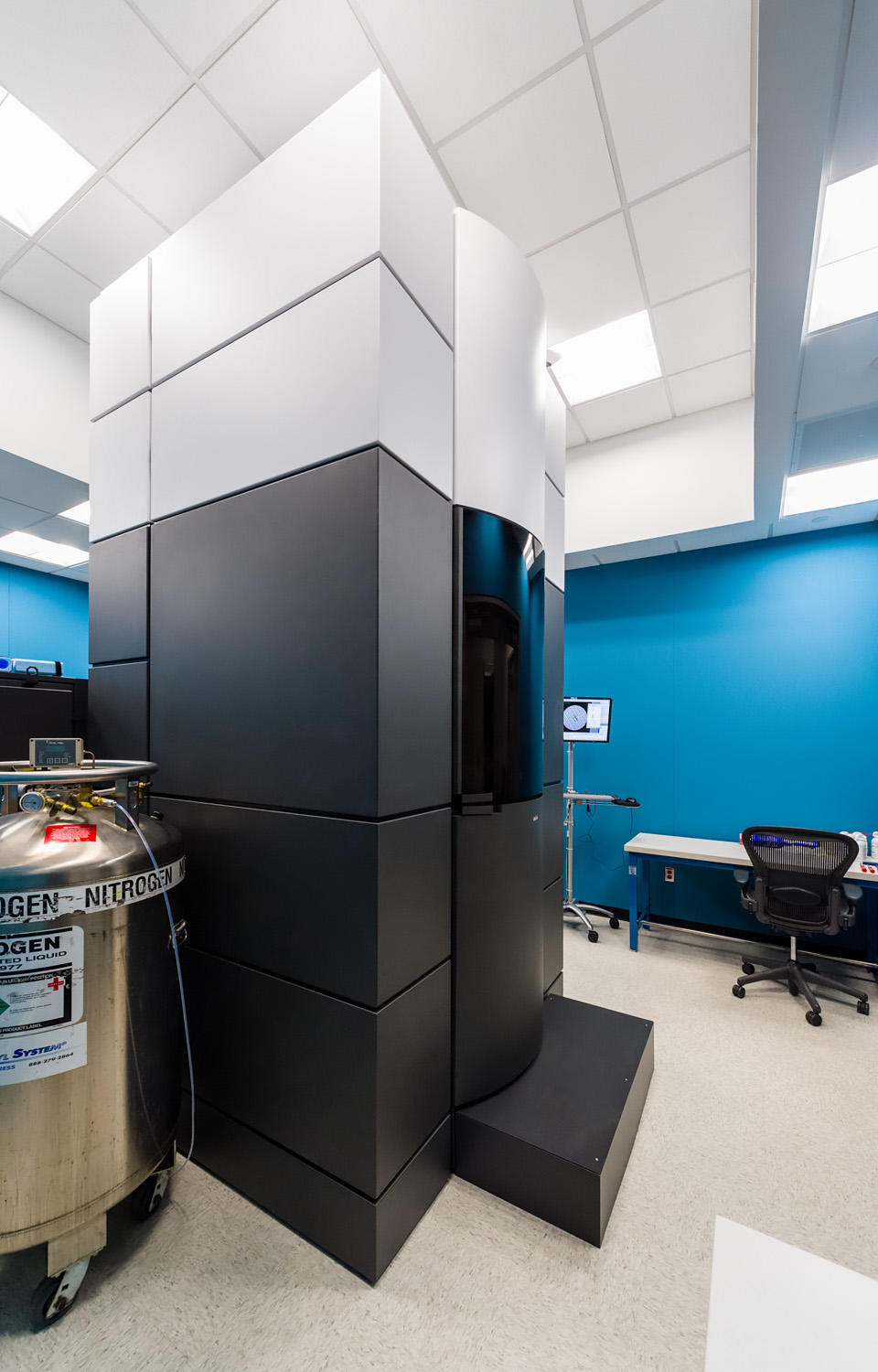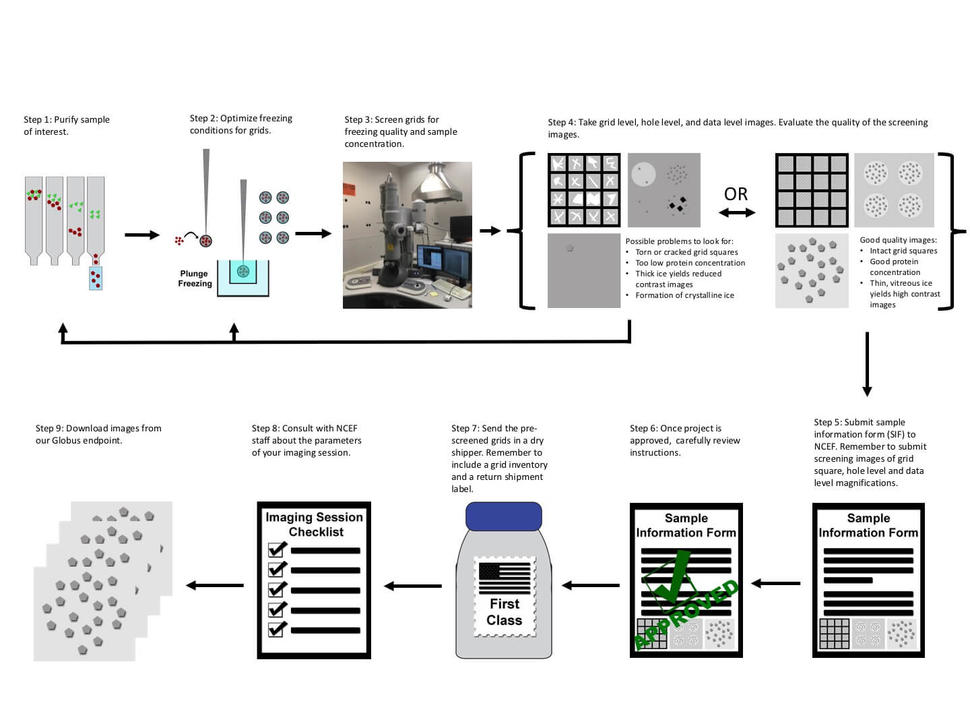The aim of the user facility is to provide cryo-EM images collected on state-of-the-art instruments to extramural academic users who can show that they have specimens of the required quality ready for imaging at high resolution.
To be considered, applicants must submit a completed NCEF Sample Information Form (SIF) and upload pre-screening images to include sample relevance in cancer research by online portal submission and creation of a user log-in at https://ncef.submittable.com/login.
Applicants need not be NIH grant holders and can apply for a 48-hour imaging session of up to two different samples that will be loaded at one time together for each session. For example, a 48-hour imaging session could image a single sample or two samples for 24-hours apiece. A SIF submission is required for each sample that is to be imaged.
Please see the NCEF Process Workflow below.
To be considered, samples should fulfill the following requirements:
- The sample must be related to cancer research
- Only biosafety level 1 (BSL 1) samples can be accepted. No potentially infectious or toxic material can be accepted
- Cryo-EM pre-screening images from the same grids made from the same plunge freezing session to be sent to the NCEF will need to be collected on a screening electron microscope, and must be provided with its corresponding Sample Information Form. Pre-screening image requirements:
- Low Magnification Images- At least 1 full grid square
- Medium Magnification Images- 1 or 5 holes in a quantifoil
- High Magnification Images- Particles should be clearly visible
After samples are accepted:
- A confirmation of acceptance will then be sent to the applicant with detailed instructions and an imaging checklist.
- Frozen cryo-EM grids can then be shipped to the NCEF for imaging. Please ship no more than eight grids per 48-hour imaging session (even for two-sample imaging sessions). Users must include a return shipping label for return of their dry shipper and include pick-up from the NCEF. A grid box inventory sheet should also be provided or can be emailed to nci-ncef@nih.gov.
- The accepted 48-hour imaging session will be queued once the grids arrive at the NCEF. The NCEF will allow only one principal investigator’s 48-hour sample run in the running queue at a time. If the same principal investigator has another approved 48-hour run session with corresponding samples already at the NCEF, then this sample run will be entered into the run queue after data collection completion of the previous session.
- Data will be transferred via Globus endpoint after imaging session. Grids will then be disposed after imaging session. Collected data will be kept for up to 1 month after transfer to the user, then deleted.
We do not require you to identify your samples. However, please provide some background information as requested in the SIF. Your data will not be shared with anyone and will not be analyzed (other than for required image quality control during data acquisition).
In any publications and posters that use data provided by NCEF, we require that you include acknowledgment, such as:
"This research was, in part, supported by the National Cancer Institute’s National Cryo-EM Facility at the Frederick National Laboratory for Cancer Research under contract 75N91019D00024."

